Q4:
AS & A Level Chemistry - 9701 Paper 1 2009 Winter Zone 2
Questions:
4/40

Topic: CH3 - CHEMICAL BONDING
Solution
Solution is B

PRACTISE
Similar Questions

LEARN
Concepts with Sparky

More Questions from this Topic
Theory
CH3 - CHEMICAL BONDING
(a) (i) Explain the lack of reactivity of nitrogen gas, $N_2(g)$.........................................................................................
2024
 Summer
Summer
 Summer
Summer
 4
4
Theory
CH3 - CHEMICAL BONDING
Bismuth is an element in Group 15 of the Periodic Table.(a) Bismuth has metallic bonding.Draw a labelled diagram to show the metallic bonding in bismu...
2024
 Spring
Spring
 Spring
Spring
 4
4
Theory
CH3 - CHEMICAL BONDING
Chlorine, $Cl_{2}$, reacts with many elements and compounds to form chlorides.Table 2.1 shows information about some chlorides of Period 3 elements.Ta...
2024
 Spring
Spring
 Spring
Spring
 5
5
Theory
CH3 - CHEMICAL BONDING
(a) Table 3.1 shows some properties of two Group 14 elements, C and Sn, in their standard states. The table is incomplete.\begin{table}
\centering
\b...
2024
 Winter
Winter
 Winter
Winter
 4
4
Theory
CH3 - CHEMICAL BONDING
Nitrogen, $N_2$, is generally an unreactive molecule but it does react under certain conditions. (a) Give two reasons to explain the lack of reactivi...
2024
 Spring
Spring
 Spring
Spring
 4
4
Theory
CH3 - CHEMICAL BONDING
(a) Sulfur chloride, $\text{SCl}_2$, is a liquid at room temperature. When $\text{SCl}_2$ is added to water, misty fumes are seen and a solution is ma...
2024
 Summer
Summer
 Summer
Summer
 4
4
Theory
CH3 - CHEMICAL BONDING
Hydrocarbon molecules contain covalent bonds.(a) Define covalent bond....................................................................................
2024
 Summer
Summer
 Summer
Summer
 2
2
Theory
CH3 - CHEMICAL BONDING
Benzene reacts with chlorine gas to form chlorobenzene. This reaction can be described as the reaction between benzene molecules and $Cl^+$ ions. The ...
2024
 Winter
Winter
 Winter
Winter
 2
2
Theory
CH3 - CHEMICAL BONDING
The Pauling electronegativity values of elements can be used to predict the chemical properties of compounds.Use the information in Table 1.1 to answe...
2023
 Spring
Spring
 Spring
Spring
 2
2
Theory
CH3 - CHEMICAL BONDING
The elements silicon, phosphorus and sulfur are in Period 3 of the Periodic Table.(a) (i) Describe the variation in atomic radius from silicon to sulf...
2023
 Winter
Winter
 Winter
Winter
 3
3
More Questions from year 2009
Theory
CH1 - ATOMS, MOLECULES & STOICHIOMETRY
Copper and titanium are each used with aluminium to make alloys which are light, strong and resistant to corrosion. Aluminium, $Al$, is in the third p...
2009
 Summer
Summer
 Summer
Summer
 2
2
Theory
CH10 - GROUP 2
Magnesium will react on heating with chlorine, or oxygen, or nitrogen to give the chloride, or oxide, or nitride respectively. Each of these compounds...
2009
 Summer
Summer
 Summer
Summer
 2
2
Theory
CH15 - HYDROCARBONS
Concern over the ever-increasing use of fossil fuels has led to many suggestions for alternative sources of energy. One of these, suggested by Profess...
2009
 Summer
Summer
 Summer
Summer
 2
2
Theory
CH22 - ANALYTICAL TECHNIQUES
(a) Complete the following reaction scheme which starts with ethanol.In each empty box, write the structural formula of the organic compound that woul...
2009
 Summer
Summer
 Summer
Summer
 1
1
Theory
CH22 - ANALYTICAL TECHNIQUES
(a) When F is formed in step I no other compound is produced. Suggest a structural formula for F, which contains one –OH group.(b) Compound G has tw...
2009
 Summer
Summer
 Summer
Summer
 2
2
Theory
CH1 - ATOMS, MOLECULES & STOICHIOMETRY
(a) Complete the electronic configuration of aluminium and of titanium, proton number 22.\[\begin{array}{|c|c|}
\hline
\text{Al} & 1s^2 \\
\hline
\tex...
2009
 Summer
Summer
 Summer
Summer
 2
2
Theory
CH10 - GROUP 2
(a) (i) Write an equation, with state symbols, for the second ionisation energy of calcium...............................................................
2009
 Summer
Summer
 Summer
Summer
 1
1
Theory
CH15 - HYDROCARBONS
Concern over the ever-increasing use of fossil fuels has led to many suggestions for alternative sources of energy. One of these, suggested by Profess...
2009
 Summer
Summer
 Summer
Summer
 2
2
Theory
CH22 - ANALYTICAL TECHNIQUES
(a) Complete the following reaction scheme which starts with propanone. In each empty box, write the structural formula of the organic compound that w...
2009
 Summer
Summer
 Summer
Summer
 2
2
Theory
CH22 - ANALYTICAL TECHNIQUES
Ethanol, CH$_3$CHO, can be converted into compound U by the following sequence.(a) When T is formed in step I, no other compound is produced.Suggest a...
2009
 Summer
Summer
 Summer
Summer
 2
2




 Share
Share




 Previous
Previous




